Lately, I’ve been teaching makeup at a fashion school in Verona and a few weeks ago Nazim decided to reach me there to spend some time together exploring the area.
The Veneto region, like the rest of Italy, offers a great number of places and venues of incomparable beauty to visit.
Of course, we had to honor Verona with a short video shot for you from the city center, Piazza Erbe, the Roman heart of the city but we also went to Soave, a village, better known for its typical white wine.
Soave is a small town about 20 km east of Verona that lying on the hilly area at the foot of the Lessini Mountains must be absolutely visited to enjoy its ancient center and its rich and well-run vine bars.
Following the city walls, however, you can access to the Scaligero castle of Soave which, like every good manor, used to dominate, control and defend the city from a strategical and privileged position.
As a typical medieval castle, it consists of a strong Mastio with high walls that revolve around it and three courtyards of different shapes, sizes, and levels, descending harmoniously to embrace the entire medieval village. Its origin dates back to the High Middle Ages and probably rises on ancient Roman fortress ruins.
Over the centuries the castle has been the theater of countless battles until its structure became obsolete and did not represent an effective defense against the new war systems: the tall and thick walls could not compete with the destructive power of gunpowder.The castle was then abandoned and its ruins used by local farmers as deposit and animals shelter.
Between 1889 and 1897 the new owner Giulio Camuzzoni, senator of the Kingdom of Italy, finally restored the castle to its original form.
Visiting the castle the way we did, in a moment of little affluence, is an exciting experience because it gives you the opportunity to enjoy its silent and its majestic beauty in the peace of its isolation.
Living in Italy I can’t tell you how many castles I have visited in my life but while I was wandering around the walls and courtyards of the Soave Castle, I had the feeling of being in Scotland or in the set of a film of medieval knights: the sky was huge, the world far away, life was still and suspended.
I do hope I somehow managed to transfer at least a bit ‘of my surprise in the photos I shoot with my phone following the guide.
As I said before the structure consists of a concentric system: the main entrance is equipped with a drawbridge, protected by a mighty tower. After passing the drawbridge you enter the first courtyard built by the Venetians in the fifteenth century.
Through a gate, you enter the second courtyard and there with a metal ladder you access to the third courtyard where the Mastio stands, the last defense bulwark. Probably inside this last structure, there was the prison and torture was carried out as it was deduced by the presence of human bones, found during the restoration work. Inside the third courtyard, an external staircase leads to the Medieval House, the dwelling, the private house of the castle Lord.
A little curiosity: the stone staircase balustrade is dotted with statues representing dogs’ heads. The first, at the beginning of the staircase, do not wear anything but as you climb up the dog’s heads are closed in a helmet to the last step where the head is completely hidden. The symbolism warns the visitor that in that house lives a warrior ready to host but in case of aggression, ready to defend with weapons of his possession.
The dogs and the ladder are two symbols related to the family I della Scala or Scaligeri which were a dynasty that ruled over the city of Verona for one hundred and twenty-five years, from 1262 to 1387.
Upstairs there is a wide central room with a large fireplace, the equivalent of a modern day living room. From the main room, you could access to a tiny enclose courtyard and to the Master bedroom. Then there was the dining room and a small room, a kind of study and through a very narrow door, you finally get to the “walkways”, narrow but protected, from which you can enjoy one of the most beautiful views in the area.
We could conclude saying that during the Middle Age a lot of stones and a lot of space had to be wasted to defend what today would seem a modest two-room apartment but at the end, we must admit it was worth the effort if in today’s world we can still enjoy their super protected point of views!
Betti
[socialWarfare]

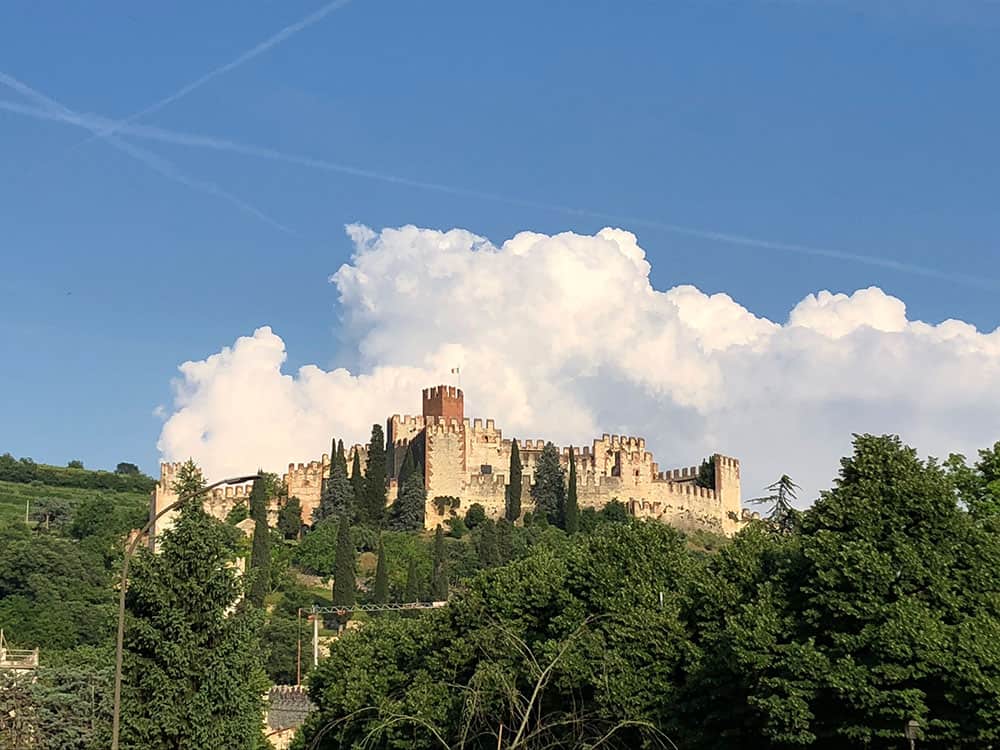
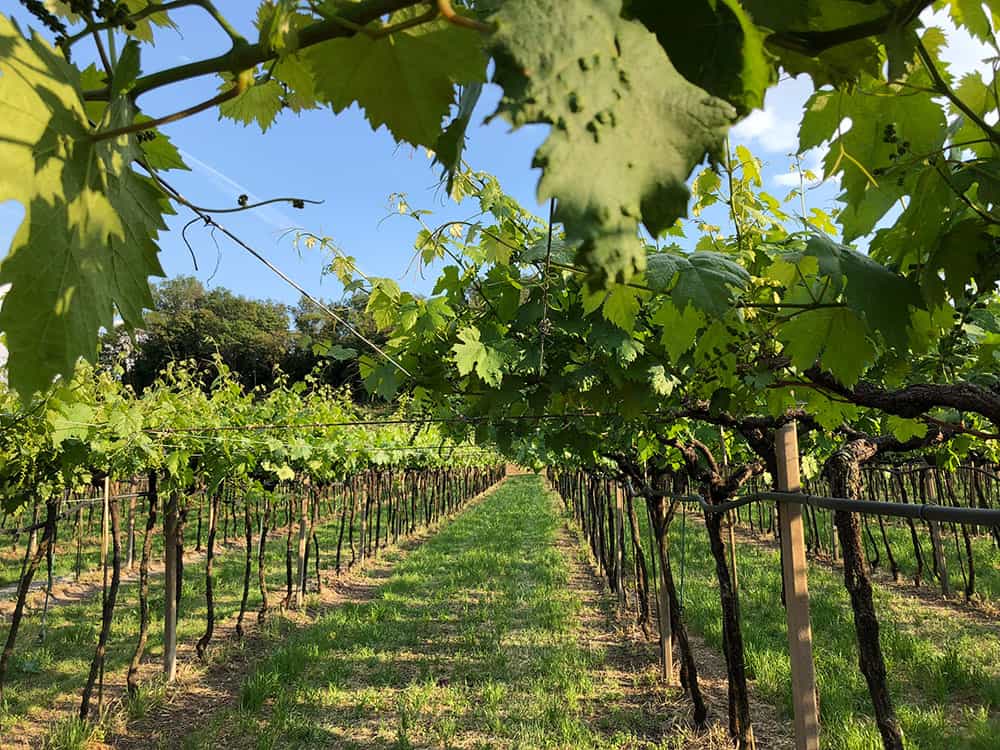
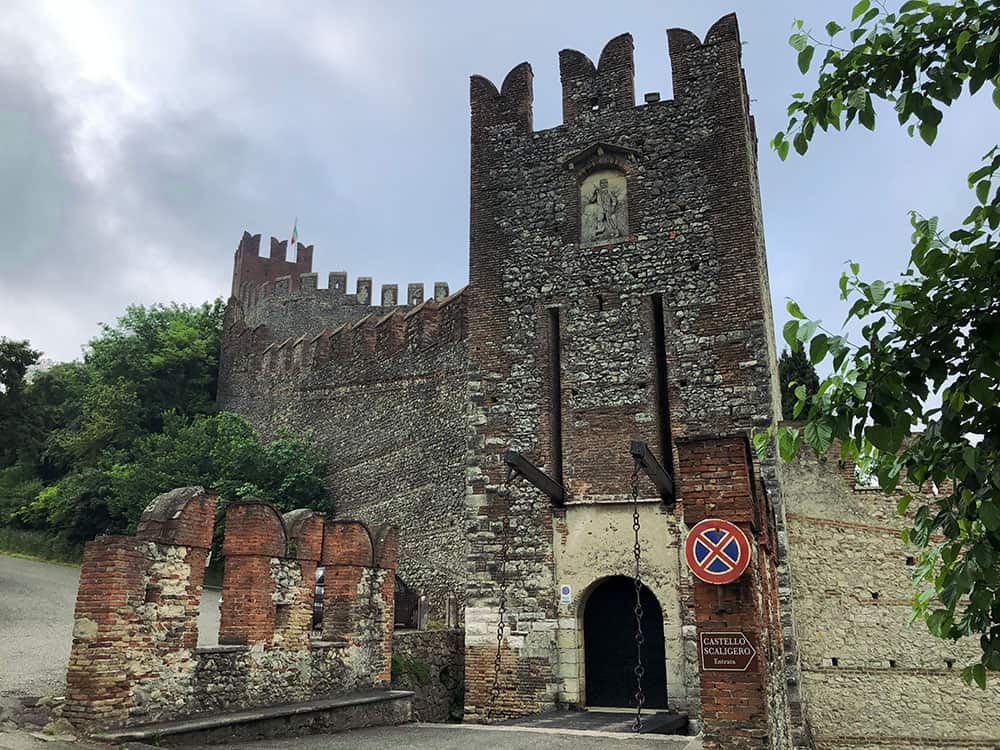
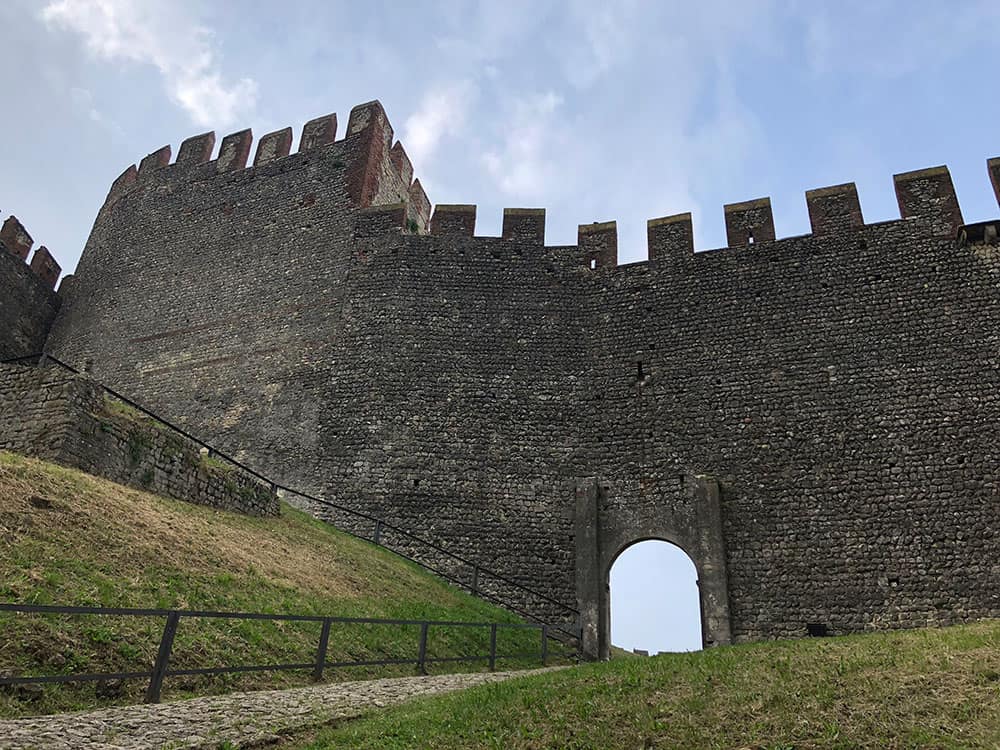
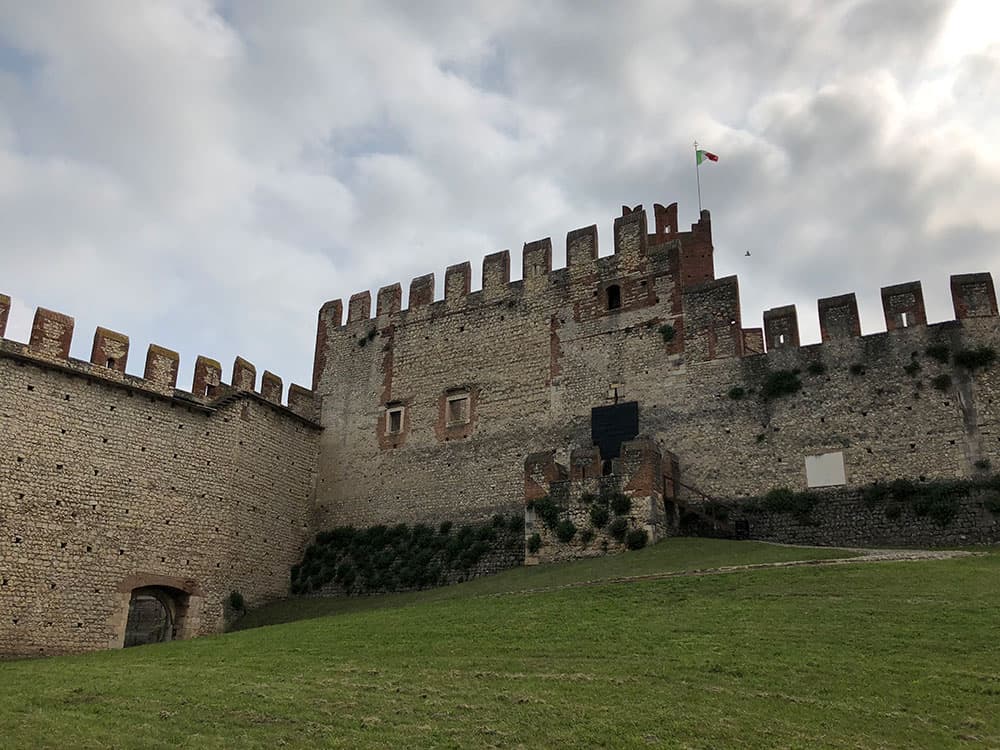
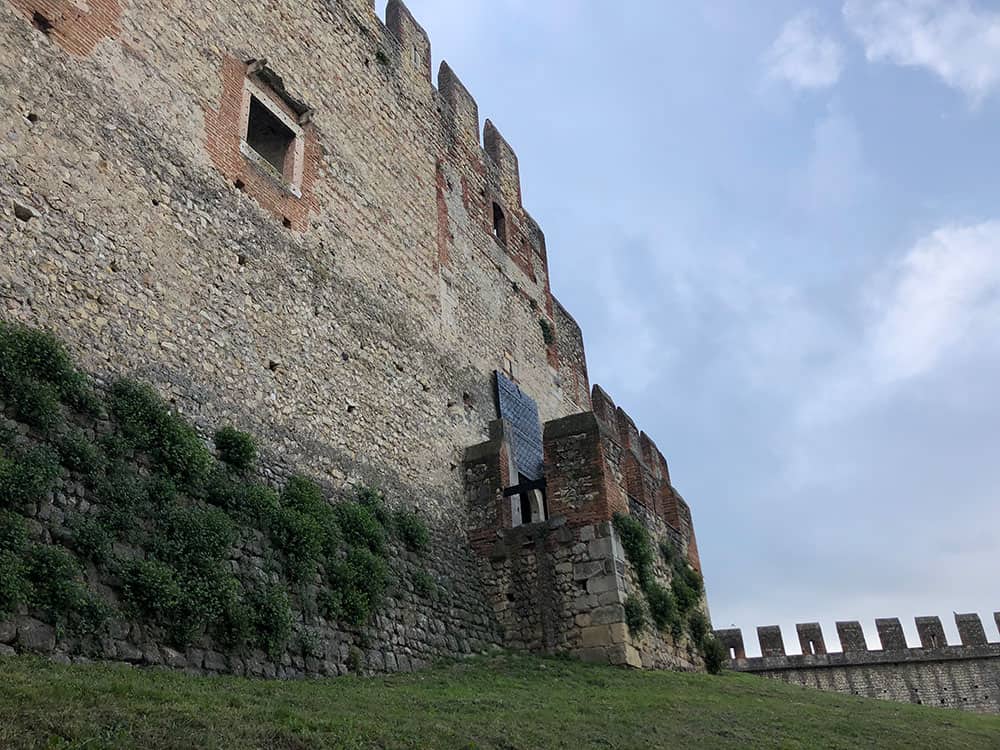
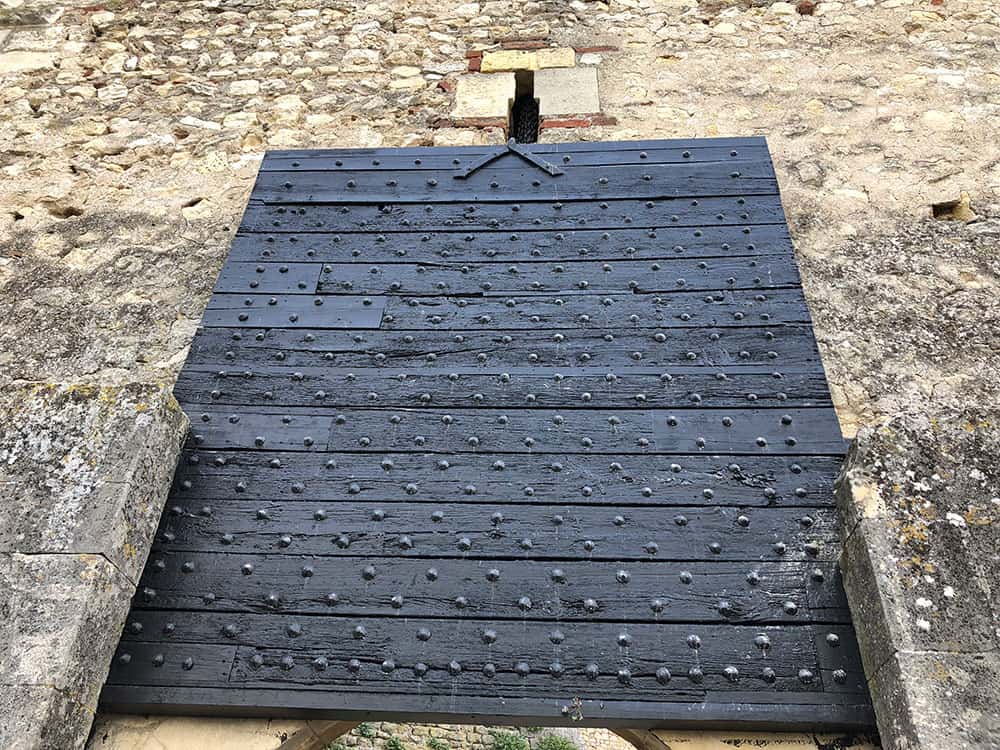

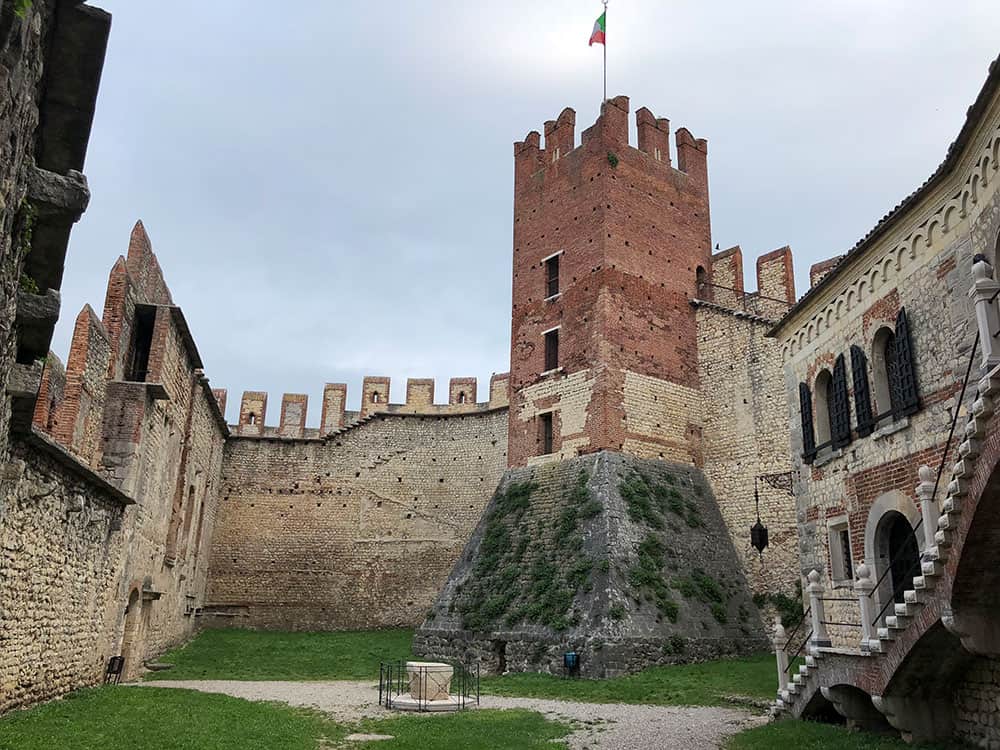
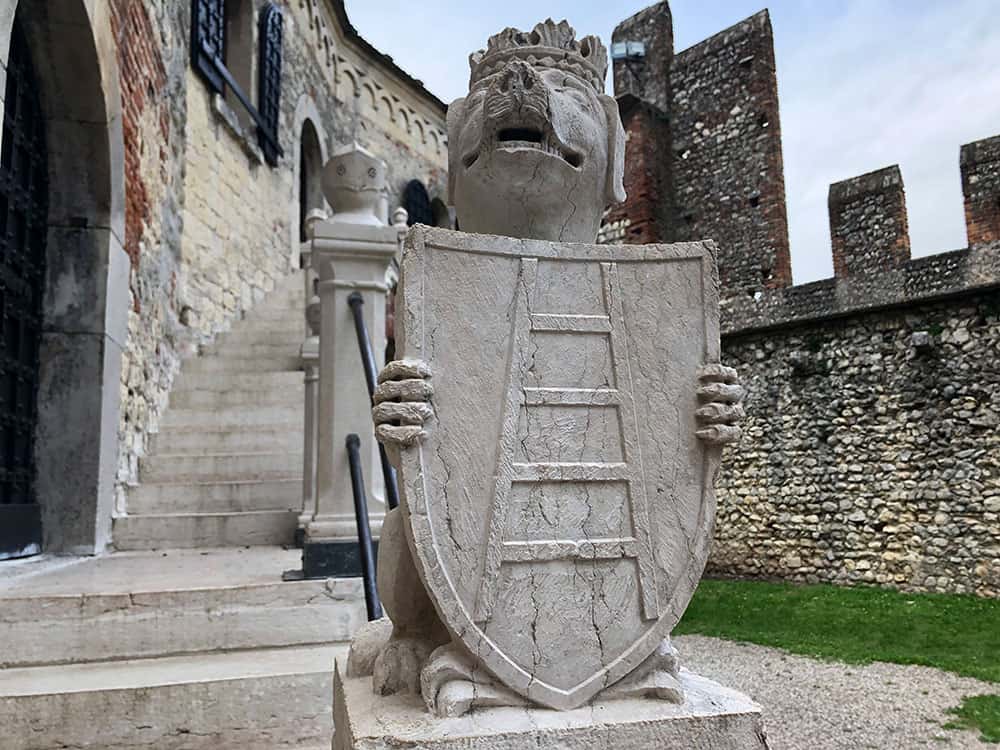
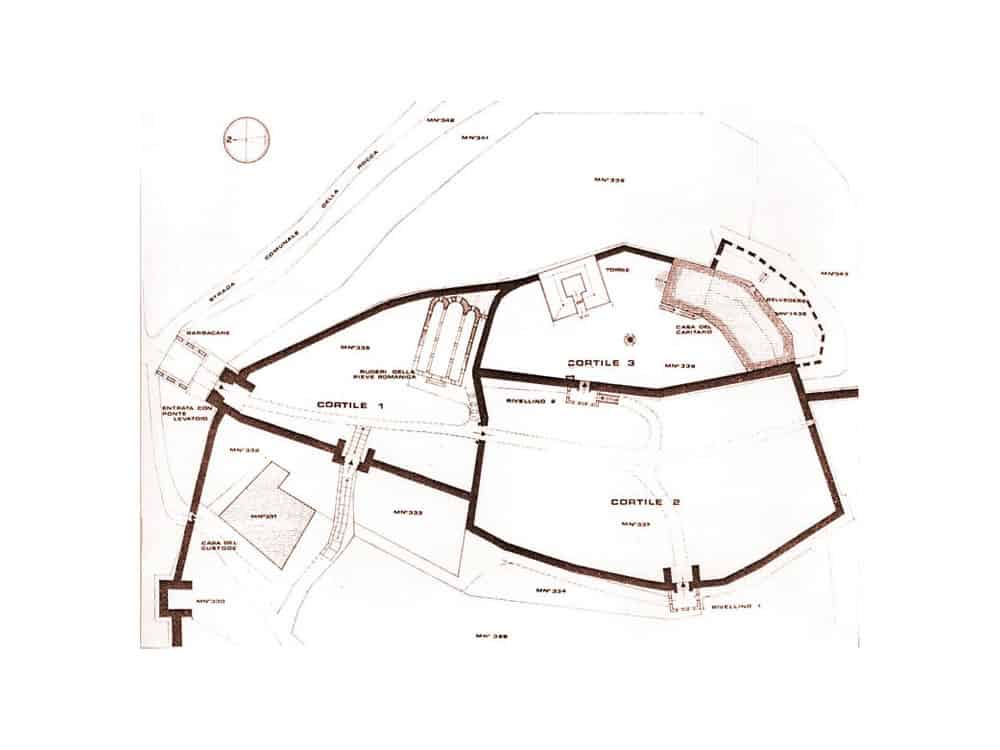
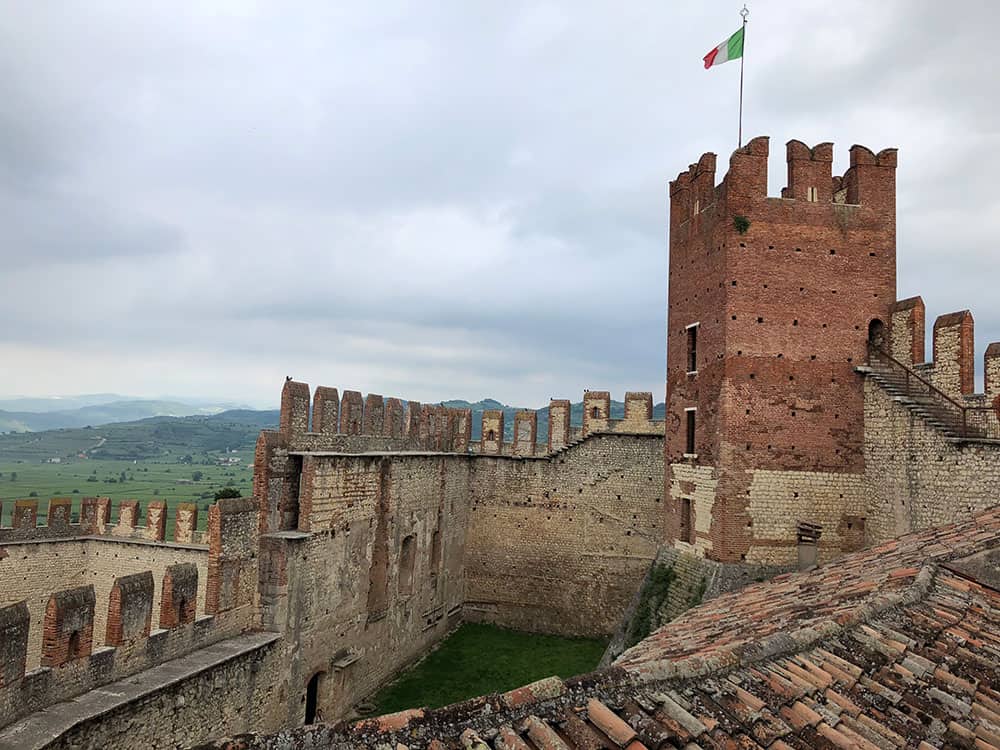
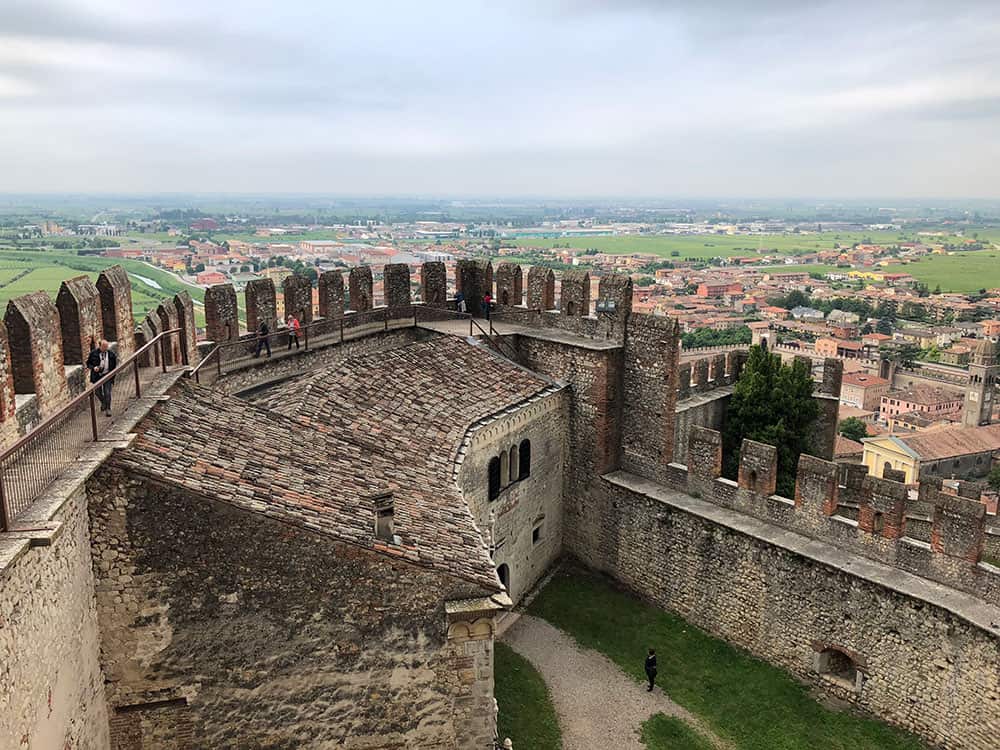
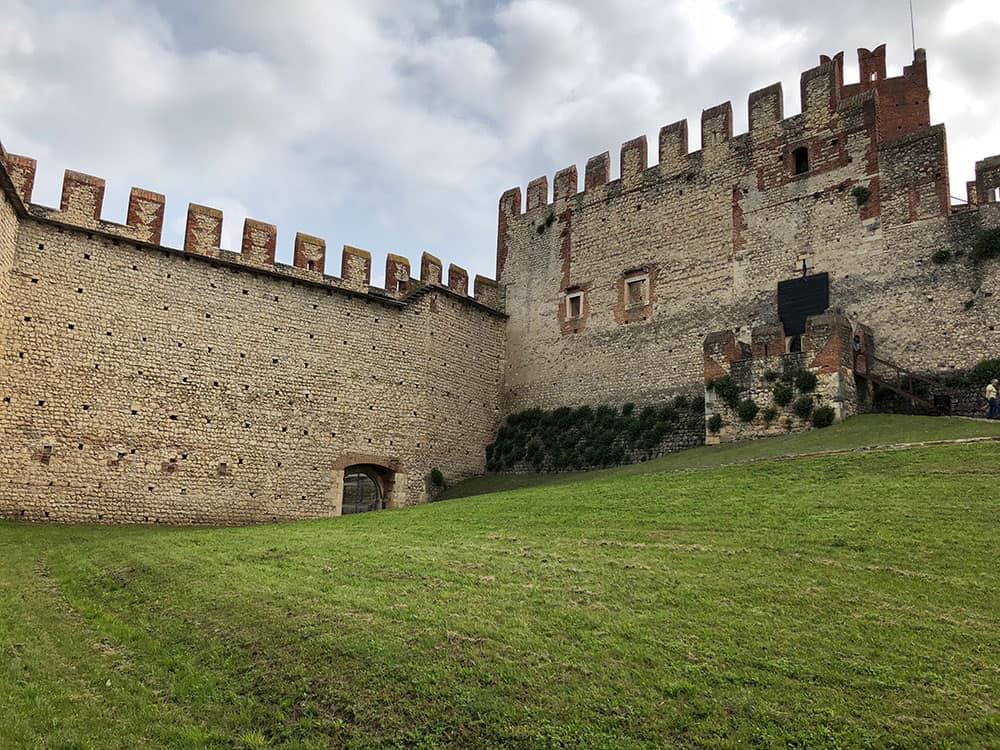
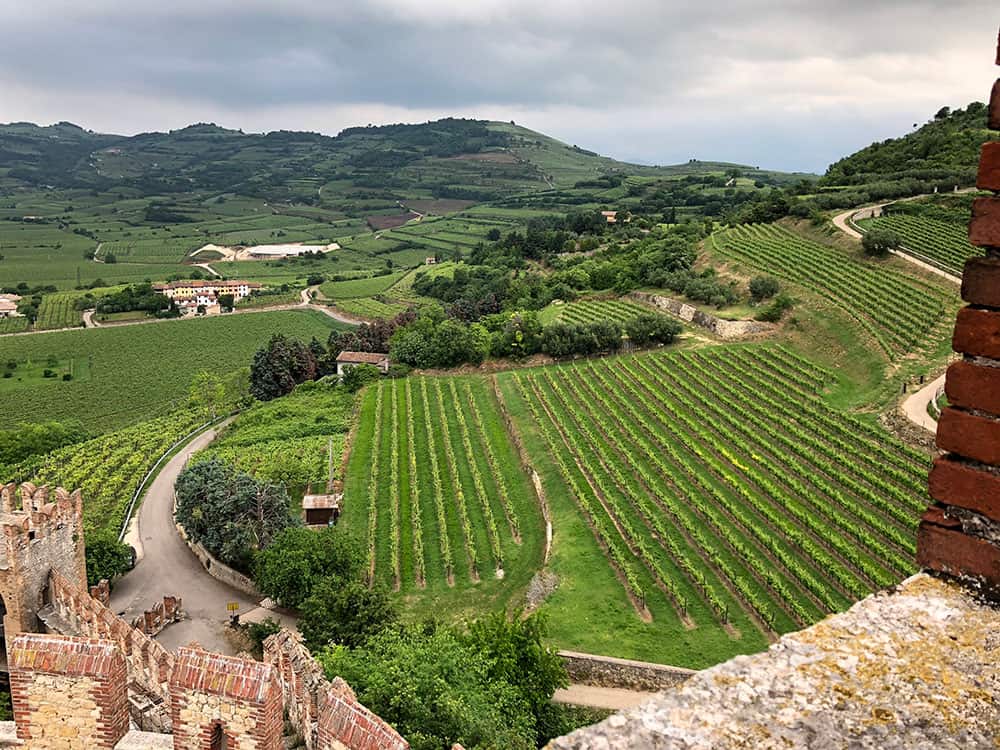
2 Comments
Marisa
June 10, 2025This castle in Soave is so beautiful. I became aware of it while watching the Giro. Am here in South Africa.
Your article and photo’s are so good. You made me feel that I was there as well. Thank you!!
casachiesi
June 11, 2025Dear Marisa,
Thank you so much! Happy you enjoyed the article. Yes the Giro just finished a couple of weeks ago and when we were down in Lecce they arrived in that city.
As you can imagine the Soave area close to Verona is also quite famous for its wines. Happy you like our articles. We invite you to sign up to our Newsletter which we send out every four months.
Grazie mille!